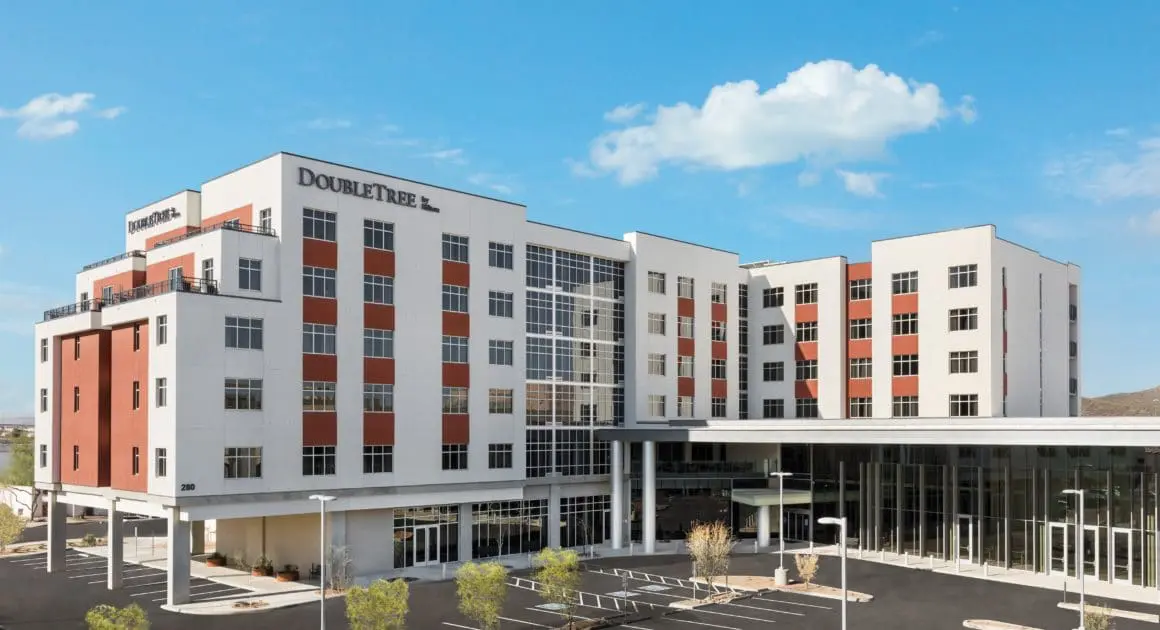There are Over 8700 Identified QOZs in the U.S. Designated to Support Underprivileged Communities in Need
Elon Musk is no stranger to the controversies his tweets typically stir up when he mentions anything related to crypto investing, the companies he owns and his wealth. Recently, he and other ultra-wealthy people were called out by David Beasley, the director of the UN’s World Food Programme while interviewing with CNN. Beasley stated that it would take $6 billion from the world’s wealthiest people to help 42 million people worldwide become food secure, which, in addition, would help to stymie global starvation, geopolitical instability and mass migration. These variables can be attributed to the influx of issues including the Covid-19 Pandemic, a rise in territorial conflict and the growing climate crisis.
Fast forward about a week, and Musk, feeling pressure from the Twittersphere regarding the subject of taxing unrealized capital gains, put out a poll asking his audience if he should sell 10% of his Tesla stock. After the poll closed, “Yes” beat out “No” 57.9% to 42.1%. Additionally, shortly after the poll closed, it was revealed that Musk has a $10 – $20 billion tax bill waiting for him, so he was coined to potentially sell off enough shares of his Tesla stock to cover it anyway at the end of Q4 2021 and into 2022. As of date, Musk sold around $13.5 million Tesla shares to cover his $11 billion tax bill.
As Musk sells enough Tesla stock to cover his impending tax bill, how is he going to manage that treasure trove of capital gains? The tax implications on that sale will be ginormous when he decides to cash out.
Like any investor, he probably wants to endure as little taxation as possible from selling his stock. However, as a mega-wealthy socialite, looking for a tax shelter in such a public sphere is typically bad public relations for someone who has in the past avoided paying any federal taxes.
But, what if he could have his cake and eat it too?
Did you know there’s a private equity real estate (PERE) investment fund type that has potentially great tax benefits for its investors, including 10-years of tax-free growth? While in turn, the capital gains rolled over into this fund type are then injected into designated, underprivileged communities across the country that can potentially help improve their socio and economic conditions with targeted real estate investment projects.
This investment option is called a Qualified Opportunity Zone Fund (QOZF).
Its positive impact affecting these communities has been measured and you can see an example of these real-life results by clicking here. The goodwill Musk could acquire from investing in distressed communities across the country would not only help people and communities in need, but it would also help his PR problem and his portfolio too.
If you would like to learn more about Opportunity Zone Investing, Caliber has put together a special guide that cuts through the myths and misconceptions and outlines the benefits, the risks, and the upcoming deadlines you must know to be able to participate. Get access to the guide here.
Join Chris Loeffler, Caliber CEO, as he shares Caliber’s journey from a small startup to a market leader in commercial real estate asset management and gives key insights on Caliber’s innovative investment approach, including self-directed IRAs and private loans.
There are various approaches utilized by Caliber, such as converting commercial spaces, investing in distressed real estate, and introducing pickleball facilities. In this podcast, Chris discusses the importance and intricacies of approaching opportunity, building investor trust, securing funding, transitioning to the public domain, and maximizing returns within Opportunity Zones.
5 Reasons Why Elon Musk Should Reinvest His Tesla Capital Gains in Qualified Opportunity Zone Funds
Musk should consider reinvesting his capital gains from the sale of his Tesla stock for the following reasons and benefits:
1. Reinvigorating overlooked U.S. communities – There are many underperforming communities in need of support and rebuilding across the country. In 2017, more than 8,700 QOZFs were established so investors could reinvest their capital gains to potentially help them improve their socio- and economic conditions. The idea is to improve conditions in these communities by investing in various commercial, multi-family, retail, and hospitality real estate projects that will help draw in new businesses, jobs and people to the area. Click here to see Caliber’s QOZF impact report.
2. Selling 10% of Tesla Stock – Musk currently owns 193.3 million shares of Tesla stock. If he sold 10% of that, it would open up just under 20 million shares of stock that could be bought and sold by a wider group of investors, giving them the ability to participate in Tesla’s growth.
3. Unlocking dormant capital and opportunity – Many investors are hesitant to sell an asset due to the high tax burden that typically follows. This leads to missed investment opportunities which then creates a pool of unproductive capital, which in turn, is rarely invested back in the economy. Opportunity Zone investing injects capital directly back into targeted, underprivileged communities, potentially improving their conditions and way of life.
4. Investing benefits of Opportunity Zones for investors – A material benefit of investing in a QOZF is the 10-year, tax-free growth. The second benefit is the deferral of tax payments until 2027 that would otherwise be paid the next year.
Consider this: With a hypothetical 8% annual growth rate over a 10-year hold, your QOZF investment can potentially earn 2x or more in after-tax profit as compared to traditional investments, due to the special tax benefits this fund type offers.
5. Contributing capital gains only – A QOZF provides some interesting flexibility when it comes to rolling over funds from the sale of your stock, real estate, business, cryptocurrency and/or NFTs. Upon selling 10% of his stock, Musk only needs to roll over the capital gains, not the entire full gross proceeds. So, in essence, he can take proceeds out from the sale while still deferring tax.
Remember, portfolio diversification is the key to sustaining generational wealth. If you’re wondering how you can diversify your portfolio with PERE investing, specifically Opportunity Zones, please email us at [email protected] to get the conversation rolling.

Join Chris Loeffler, Caliber CEO, as he shares Caliber’s journey from a small startup to a market leader in commercial real estate asset management and gives key insights on Caliber’s innovative investment approach, including self-directed IRAs and private loans.
There are various approaches utilized by Caliber, such as converting commercial spaces, investing in distressed real estate, and introducing pickleball facilities. In this podcast, Chris discusses the importance and intricacies of approaching opportunity, building investor trust, securing funding, transitioning to the public domain, and maximizing returns within Opportunity Zones.
About Caliber
As the Wealth Development Company, we are a leading U.S. sponsor with approximately $500 million in assets under development and management. These investments are comprised of alternative investments, which include private funds and syndications, externally managed real estate investment trusts (REITs) as well as public funds. We conduct substantially all business through our Sponsor, CaliberCos Inc., a vertically integrated platform that is strengthened by more than 70 professionals with decades of institutional experience in commercial real estate, capital markets, alternative investments, and mergers and acquisitions.
We allocate our alternative investment strategies and align them with investors’ investment objectives, risk profiles and liquidity preferences to offer an optimal balance of risk-adjusted returns and attractive investment performance. It is because of this thoughtful, intentional approach, and our unwavering pursuit of performance, that we have been deemed The Wealth Development Company.
We strive to build wealth for investors by offering a diverse host of investment solutions that fit our investors’ needs. With a primary focus on key middle-market growth areas, such as Arizona, Colorado, Nevada, Texas, Utah and Alaska, we evaluate other U.S. markets that possess the same attractive demographics and macroeconomic trends as our targeted markets, such as highly skilled labor, emerging population and job growth. In addition, we utilize our institutional full-service operating platform to generate operating efficiencies while enhancing the value of our investments through dedicated asset management strategies.
We create value through a combination of internal and external growth channels. Bringing together the benefits of real estate, deep asset-class, and capital markets expertise across public and private investments. We seed, develop, and manage a broad range of liquid and illiquid alternative strategies for a diverse group of investors who comprise approximately a $4 trillion alternative investment market, which includes high net worth, accredited and qualified investors, as well as family offices and smaller institutions. This strategy allows us to opportunistically compete in an evolving middle-market arena for alternative investments that range between $5 million and $50 million.
Click here to see Caliber’s current property portfolio.
If you would like to speak to someone about diversifying your retirement accounts, contact us at [email protected] or call (480) 295-7600 to schedule a call with a member of our Wealth Development Team.
If you would like to learn more about Opportunity Zone Investing, Caliber has put together a special guide that cuts through the myths and misconceptions and outlines the benefits, the risks, and the upcoming deadlines you must know to be able to participate. Get access to the guide here.
Investor Considerations
The information contained herein is general in nature and is not intended, and should not be construed, as accounting, financial, investment, legal, or tax advice, or opinion, in each instance provided by Caliber or any of its affiliates, agents, or representatives. The reader is cautioned that this material may not be applicable to, or suitable for, the reader’s specific circumstances, desires, needs, and requires consideration of all applicable facts and circumstances. The reader understands and acknowledges that, prior to taking any action relating to this material, the reader (i) has been encouraged to rely upon the advice of the reader’s accounting, financial, investment, legal, and tax advisers with respect to the accounting, financial, investment, legal, tax, and other considerations relating to this material, (ii) is not relying upon Caliber or any of its affiliates, agents, employees, managers, members, or representatives for accounting, financial, investment, legal, tax, or business advice, and (iii) has sought independent accounting, financial, investment, legal, tax, and business advice relating to this material. Caliber, and each of its affiliates, agents, employees, managers, members, and representatives assumes no obligation to inform the reader of any change in the law or other factors that could affect the information contained herein.
